Highlights 2023
The Sense / Health Institute Conference
“Train the brain to see again”
Le mercredi 18 janvier, le Sense et l’Institut Santé ont coorganisé une conférence à Energypolis. Ce premier événement marque le début d’un cycle de conférences aussi bien pour le Sense que pour l’Institut Santé de la HES-SO Valais-Wallis. Un peu plus d’une vingtaine de personne prirent part à cet événement. Après une présentation du centre d’innovation et de recherche The Sense par le Pr. Olivier Lorentz (Directeur Exécutif du Sense), le Pr. Invité Olivier Collignon a présenté le fruit de ses recherches intitulé « Plasticité cérébrale et privation sensorielle » qui se base essentiellement sur l’étude d’un panel d’aveugles de naissance.
The brain: an adaptive organ
During the comparative study of brain activity in blind and sighted individuals, it was observed that brain regions (such as the occipital region) which normally process visual activities, transform to process new information related to touch or hearing for blind/visually impaired individuals. This phenomenon demonstrates the principle of brain plasticity. Indeed, the brain adapts to the sensory experience unique to each individual. For example, if the occipital cortex is disrupted: sighted individuals will experience problems with their vision, while blind individuals will experience problems related to touch and hearing - for example, loss of the ability to read braille.
Restoration of vision for a blind person: miracle or curse?
During the restoration of vision (corneal transplant or cataract treatment) for a person blind from birth, it has been noted that it is not necessarily a miracle. Although the eye is fully repaired and functional, the brain may not necessarily be able - after a certain age - to have enough plasticity to adapt to these new sensory modalities related to vision. Even if vision has been perfectly restored from an ophthalmological perspective, these individuals may have poor vision. When aiming to restore the vision of a visually impaired person, it is essential to consider the brain. It is crucial to have an interaction between basic and applied research, between ophthalmology and neuroscience, in order to fully understand the impact of visual restoration.
“Train the brain to see again”
By better understanding the mechanisms of brain plasticity, scientists will likely be able to more precisely target vision rehabilitation using various technological processes. For example, they could train the brain to perform specific tasks related to the sensory deficits of each patient. As we age, the brain becomes less plastic. If action is needed, it should be taken as early as possible. That's the key to visual restoration!
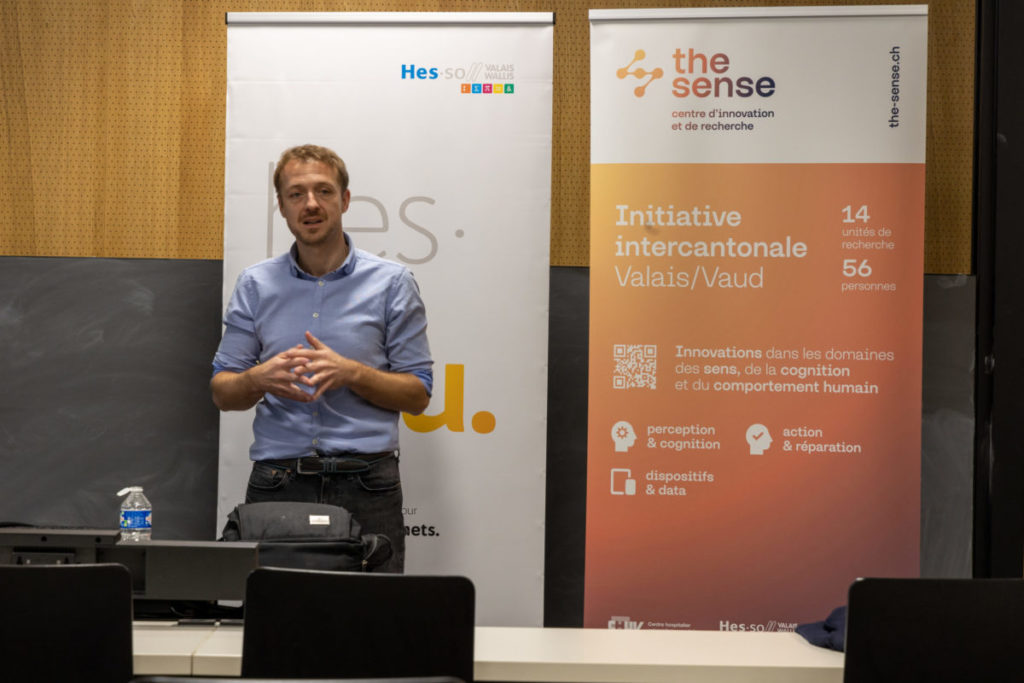
Conference: "When Economics Meets Health (and Vice Versa)"
On February 24th, Prof. Joachim Marti (Unisanté) gave the second conference of The Sense on the theme "When Economics Meets Health (and Vice Versa)." Professor Marti's research has a direct impact on The Sense's areas of study, providing a more objective view of health economics and the micro- and macro-scale factors contributing to the introduction of new treatments into the healthcare system.
What is meant by health economics?
Economics aims at the optimal allocation of limited resources to meet unlimited needs. This issue is particularly present in the field of health where trade-offs are necessary at various levels (individuals, providers, government, etc.). Professor Marti's research aims to elucidate these trade-offs and understand the behaviors and decisions of healthcare system actors, through three main axes: the costs and benefits of treatments and health policies, economic analysis of decision-making by different stakeholders, and the efficiency and equity of resource allocation.
Healthcare: a market like any other?
Healthcare and health services are unique objects that have very specific characteristics. Economists have been interested in them since the mid-20th century particularly due to the following characteristics:
-
- Ubiquity of risk and uncertainty: e.g., risk of falling ill, financial consequences of illness, impact on quality of life, uncertainty about treatment effectiveness;
- Asymmetries of information: information is not evenly distributed among system actors. For example, the doctor has more information about treatment effectiveness than the patient; the citizen has more information about their health and health behaviors than their insurer.
- Presence of externalities: A good or service whose use generates harm (or benefit) without it being compensated. The price of this good or service therefore does not reflect the social cost (or benefit) of its use, and government intervention is justified. For example, the price of a pack of cigarettes does not take into account the negative impacts of secondhand smoke. Therefore, it is economically justified to tax this negative externality. Another example is the social benefits of a vaccine (preventing the spread of a disease), which justify lowering its price (e.g., through a subsidy).
- Bounded rationality: The rational consumer does not exist. The decision-making capacity of actors is influenced by cognitive biases, lack of information, etc.
Government intervention in the healthcare sector is common to compensate for market failures caused by these characteristics. Indeed, the market cannot function entirely freely, otherwise there would be underutilization of care and greater inequality of access. To learn more about the projects and studies of Professor Marti's Sector, you can refer to the website of Unisanté and to that of the new HEC-FBM-Unisanté platform for health economics, behaviors, and policies, LCHE.
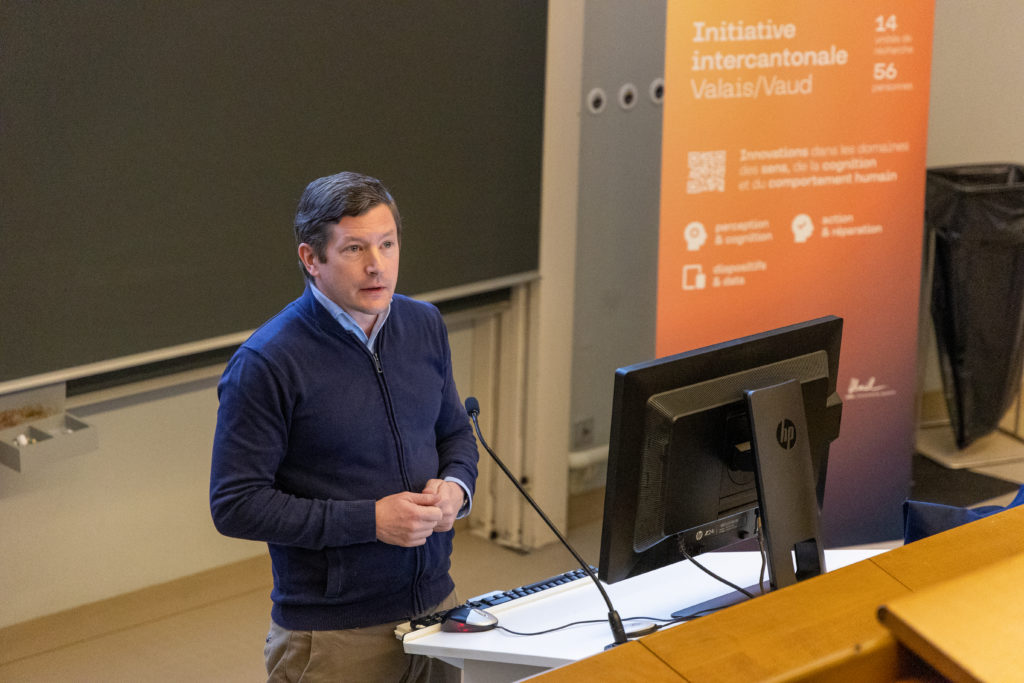
STAYFITLONGER: WHEN COMPUTING HELPS US AGE BETTER!
In collaboration with CHUV, the company Mindmaze, the Haute Ecole Arc, ProSenectute, BruSano in Bruxelles and the University Institute of Geriatrics of Montreal, the project StayFitLonger coordinated by the HES-SO Valais-Wallis received funding from the European Commission through the AAL (Active and Assisted Living) program. This program finances research into information technology-based solutions for a more independent life in old age.
Coordinated by Antoine Widmer, professor and researcher at the HES-SO Valais-Wallis of Informatics, the European project StayFitLonger proposes aging pathways using computer data.
The aging of brain structures often accompanies a decrease in physical and intellectual abilities. The goal of StayFitLonger is to prevent or slow down this deterioration. How? By integrating physical exercises to prevent falls as well as cognitive training in the form of games, StayFitLonger has also enabled social interaction with a virtual coach on demand.
Maintaining memory and training the brain through Sudoku?!
Science now proves that these exercises (editor's note: Sudoku and crossword puzzles) develop specific but insufficient capacities in terms of concentration and memory.
The project has demonstrated the importance of activities involving distributed or divided attention, which means performing an exercise that requires multiple tasks simultaneously, both physical and cognitive.
Antoine Widmer's mantra: technology serving people's lives
The application of all this knowledge to the medical field of online health is particularly interesting to Professor Widmer because his work can have a concrete impact on people's lives and pave the way for personalized medicine.
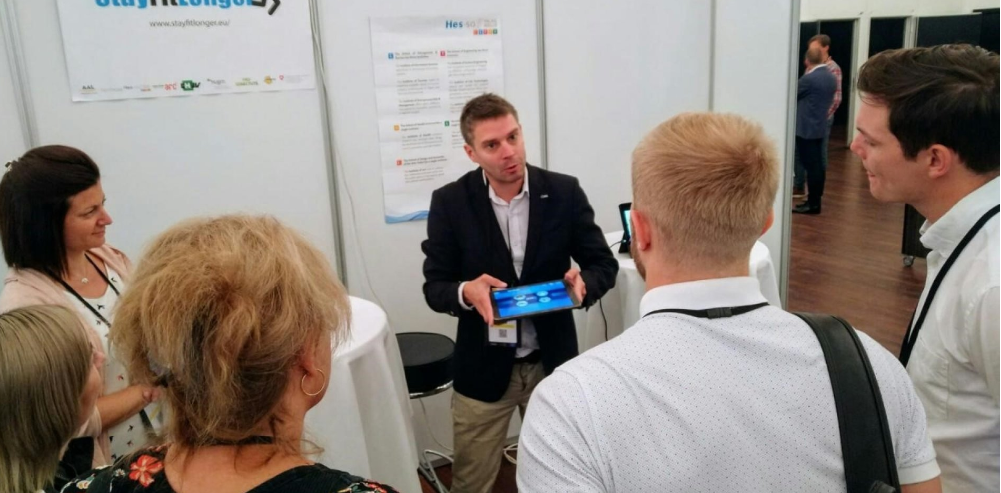
Seminar: Open Science - Open Access (OA) and Open Research Data (ORD)
Open Science, particularly the dimensions of Open Access (OA) and Open Research Data (ORD), aim to make scientific literature as well as research results and data immediately available on the internet with full reuse rights. Swissuniversities, as well as funding agencies such as the FNS aim to make freely and openly accessible on the internet all scientific publications funded by public funds by 2024, and also the associated datasets when there are no ethical or commercial aspects that oppose it. However, this poses serious challenges, and the means to address them vary across institutions.
After an introduction on OA, FAIR data sharing, and ORD, a round table will be offered to exchange the viewpoints of researchers and a field service from the Dr. Cécile Lebrand (Head of Publications and Open Research Data Management Support Service – FBM), a strategic-level approach of Ms. Constance Delamadeleine (Project Manager Open Data - HES-SO Rectorate), as well as an exchange with the audience.
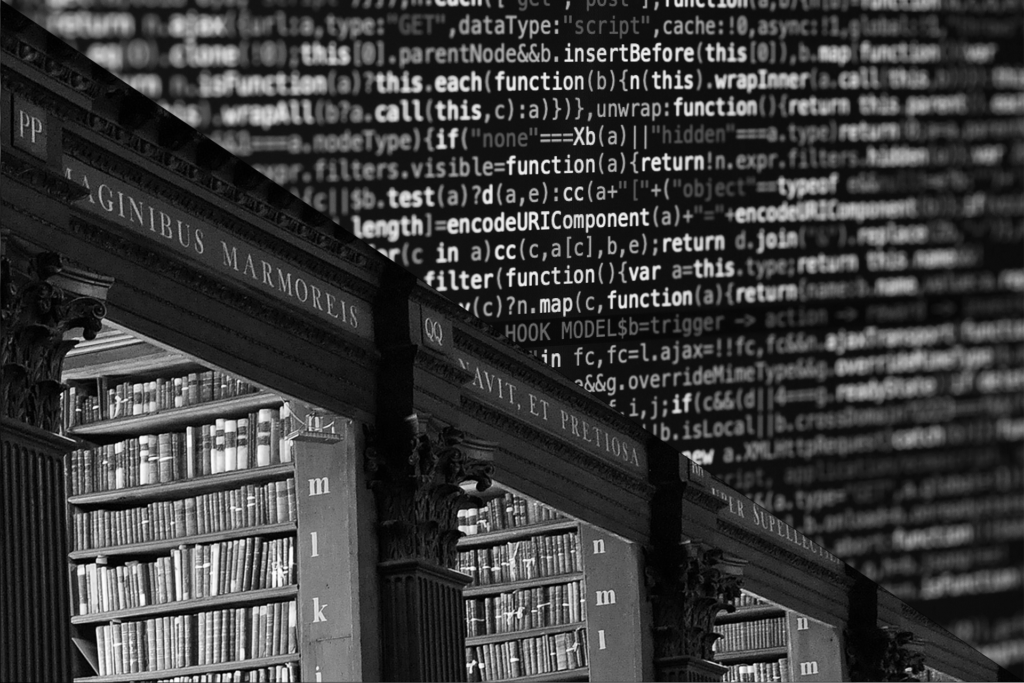
Seminar - From Continuous Streams to Segmented Units: Understanding How Events Structure Cognition and Memory
While perceptual information arrives more or less continuously over time, our minds apprehend coherent and delimited subsequences that have beginnings, middles, and ends and extend over time. For example, speech unfolds continuously without pauses between words, but we understand meaningful units, at multiple hierarchical levels, such as phonemes, syllables, words, and phrases, and "hallucinated" pauses in the rhythm of these perceived mental units. A central issue has been to understand how and why the continuous stream of experiences is partitioned in this way. In this conference, Prof. Lucia Melloni (Max Planck Institut for Empirical Aesthetics and NYU Grossman School of Medicine) will present studies in which she used both invasive and non-invasive electrophysiology and computer modeling in tasks involving artificial sequences and visual narratives. These studies have revealed the computations and brain mechanisms mediating sequence segmentation and encoding, with the broader goal of understanding the building blocks of temporal experience and why time unfolds as it does. For example, how we can apprehend, feel, and marvel at the temporal structure of music.

Success of Sense PIs at the International Multisensory Research Forum
Last June, the 21st edition of the International Multisensory Research Forum (IMRF) took place in Brussels from June 27th to 30th. The main objective of the IMRF is to bring together researchers in the multidisciplinary field of multisensory research so that they can present and discuss their latest discoveries and foster exchanges for future development. The multidisciplinary nature of the conference is illustrated by the fact that the topics addressed ranged from cognitive psychology to the development of sensory substitution devices, computational modeling, and altered perception in neurodiverse populations. Among the organizing committee of this forum is Professor Olivier Collignon (Visiting Professor at the Health Institute and Principal Investigator of the innovation and research center The Sense). "The quality of the event was exceptional, both from a scientific point of view and in terms of informal interaction moments," said Professor Collignon.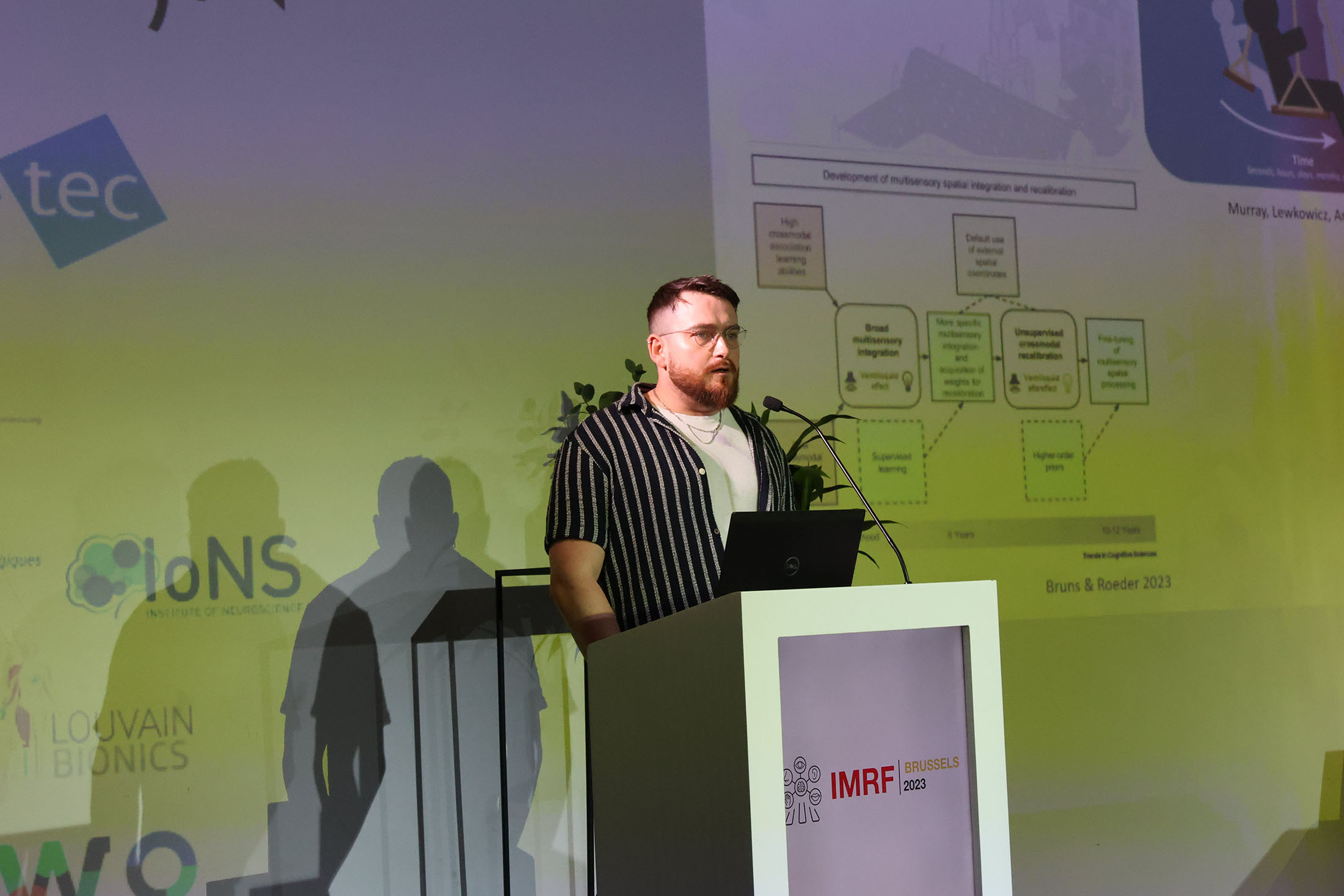
A paradigm-shifting symposium
The twelve selected symposiums highlighted the scope and diversity of multisensory research, addressing topics such as neuronal mechanisms and the dynamics of cortical networks underlying multisensory perception, multisensory interactions in three-dimensional space and the use of virtual reality, as well as interactions between olfaction and other senses. Among the symposiums, the 8th and final of this forum was organized by Professor Paul Matusz (Assistant Professor at the School of Health / PhysioLab coordinator / Principal Investigator of The Sense). This symposium entitled "Resolving old debates, posing new questions: Factors influencing the development of multisensory processes in typical and atypical populations" marked this edition of the IMRF.
Workshop The Sense and Biped
A workshop took place at the Energypolis Campus and Biped's CTO, Bruno Vollmer, and the leadership of The Sense (Olivier Lorentz and Micah Murray)), along with affiliated researchers (Simone Gafner, Antoine Widmer, Benedetta Franceschiello, and Michela Bassolino). ) to identify common interests and pave the way for future collaborations.
Biped is a startup that develops anIntelligent for blind individuals Biped's vision is to build an innovation that will change lives, enabling users to explore new places entirely on their own, safely and independently. 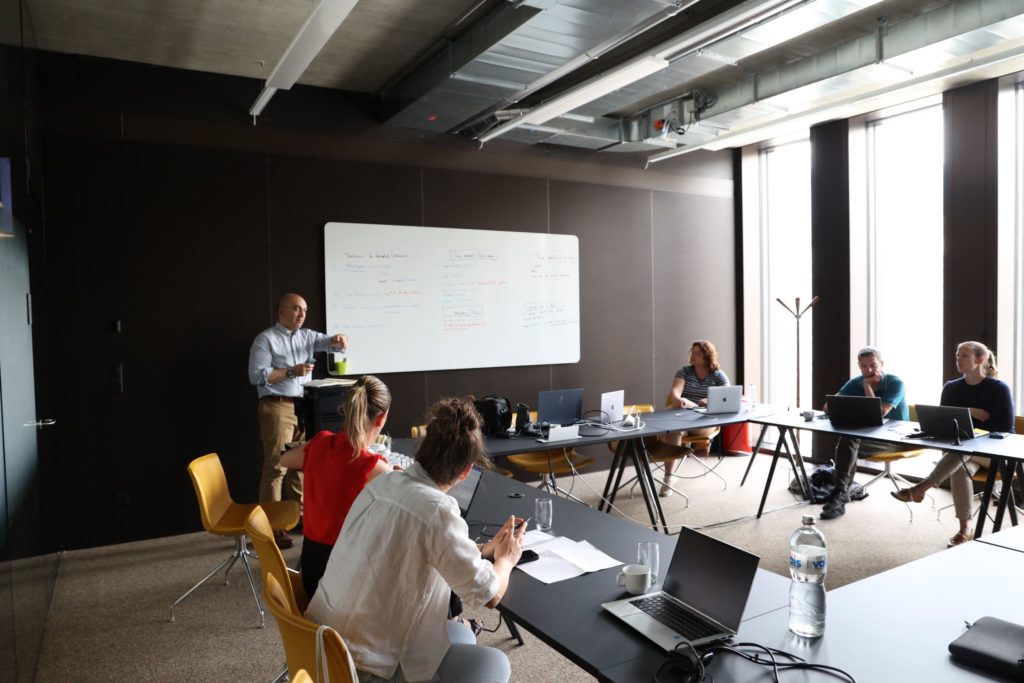
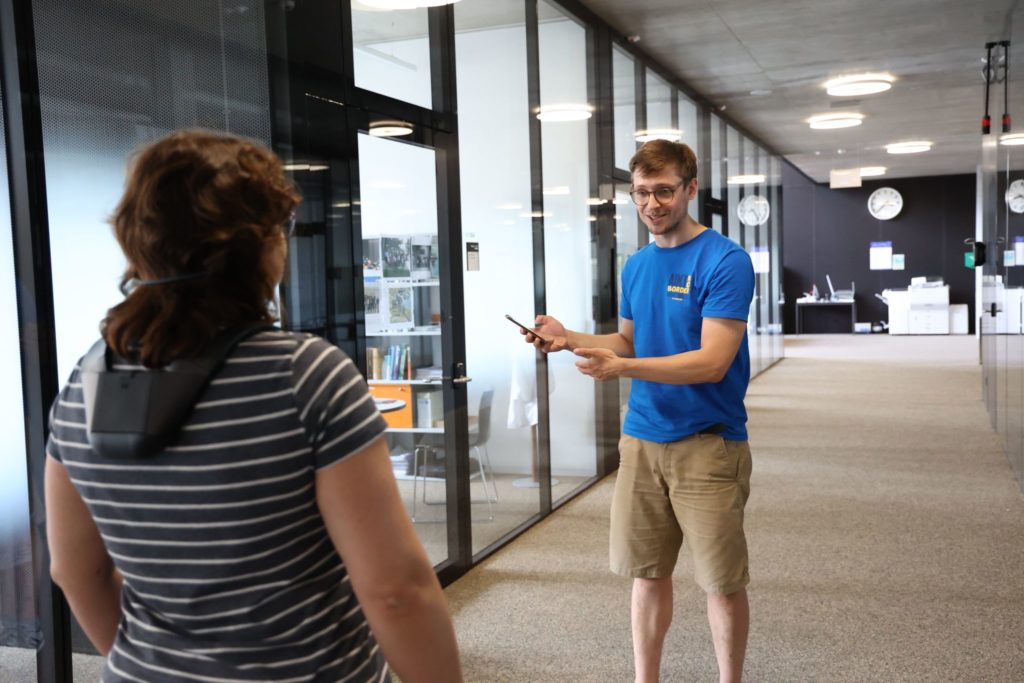
2023 projects funded by The Sense
The Sense is pleased to announce the four new projects that have been funded this year through our highly competitive internal call. These inter-institutional projects are all coordinated by people affiliated to The Sense who have not previously received internal support. In addition, three of these projects are coordinated by female researchers.
Here are the four projects supported this year:
Flavor – Sandra Galle (HES-SO Valais-Wallis) / Chrysa Retsa (CHUV-UNIL)
Development of EEG-based tools to understand flavour perception in response to sustainable food technologies.
We will develop a method to measure and quantify the cognitive response to dynamic flavour stimuli in a plant-based model system, and correlate this with state-of-the-art flavour and sensation analysis. This tool would generate a matrix of information enabling the creation of new models for predicting the perception of flavours as a function of their release, a powerful conclusion for product developers.
KiCk fMRI – Benedetta Franceschiello (HES-SO Valais-Wallis) / Juliane Schneider (CHUV-UNIL)
Validation of innovations to extend the testable age range for fMRI studies in children.
Functional magnetic resonance imaging (fMRI) is a non-invasive technique that records correlates of neuronal activity while participants perform behavioural tasks or rest. However, fMRI is subject to movement artefacts. In subjects behaving normally, this is rare, as they can be asked to remain motionless. Children are a particularly sensitive population, as it is more difficult to give them instructions and they are more prone to involuntary movements. In this project, we are developing a new technique, Ki-Ck fMRI, capable of reliably measuring fMRI in children and successfully correcting artefacts, representing an unprecedented advance in the field.
MVO – Antoine Widmer (HES-SO Valais-Wallis) / Julien Favre (CHUV-UNIL) / Chantal Berna Renella (CHUV-UNIL)
Introduction of virtual reality platforms to enable movement in patients suffering from chronic low back pain.
MVO will explore how fear of performing specific movements impacts the way people with low back pain move in specific situations. Virtual reality will be used to induce a sense of fear without the potential risk of injury.
WildCom – Erica Van de Waal (UNIL) / Olivier Collignon (HES-SO Valais-Wallis)
Translating laboratory paradigms and materials to natural environment sites to understand multisensory communication.
"WildCom" will explore the interesting idea that combinations of gestures and vocalisations have been crucial in the emergence of unique linguistic abilities in humans. This question will be addressed by adapting experiments generally carried out on humans in the laboratory directly to wild monkeys in their natural habitat.
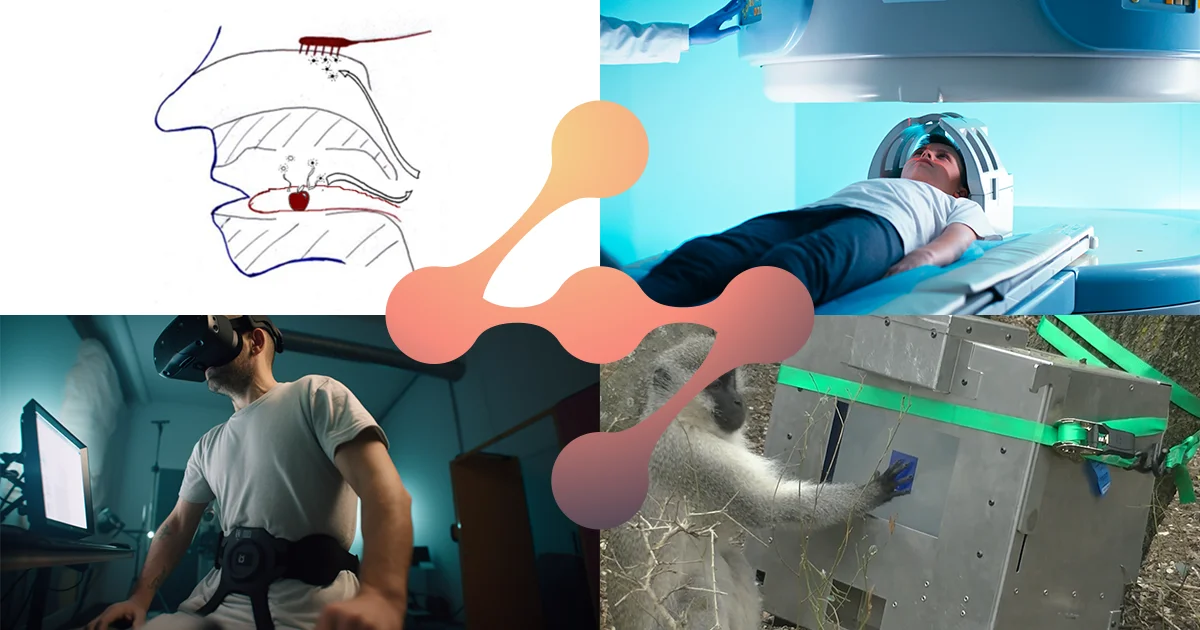
Changes to the Scientific Advisory Board (SAB)
The management of The Sense is pleased to announce that Professors David Sander (University of Geneva) and Fiona Newell (Trinity College Dublin) have joined the Scientific Advisory Board. We are looking forward to this future collaboration and to drawing on their expertise. We would also like to take this opportunity to thank Professors Robert Riener (ETHZ) and Anna Nobre (Yale University) for their service to The Sense in its initial phase.
Their profiles and expertise:
Professor David Sander studied mathematics and psychology at René Descartes University (Paris, France) and obtained a Ph.D. in cognitive sciences from Lumière University (Lyon, France). In 2002, he joined the Department of Psychology at the University of Geneva. He is now a full professor in this department, where he directs the Laboratory for the Study of Emotion Elicitation and Expression (E3Lab). In 2012, he was appointed director of the Interfaculty Center for Affective Sciences and the National Center of Competence in Research (NCCR) for Affective Sciences. He is mainly interested in the mechanisms involved in emotion elicitation and how these mechanisms modulate attention, memory, and decision-making. He has received the national Latsis prize for his research.
Prof. Fiona Newell is a Professor of Experimental Psychology (personal chair) and a member of Trinity College Dublin. She graduated in psychology from Trinity College Dublin and completed her Ph.D. at the University of Durham, UK. During her postdoctoral training, she spent time in various academic institutions, including the MRC Cognition and Brain Sciences Unit in Cambridge, UK, and the Max Planck Institute for Biological Cybernetics in Germany. After a brief career in industry, she returned to Trinity College in 2000. Newell is a former Fulbright scholar, a member of the Psychonomics Society, and a member of the Association for Psychological Science. Her primary research areas focus on human perceptual processes.
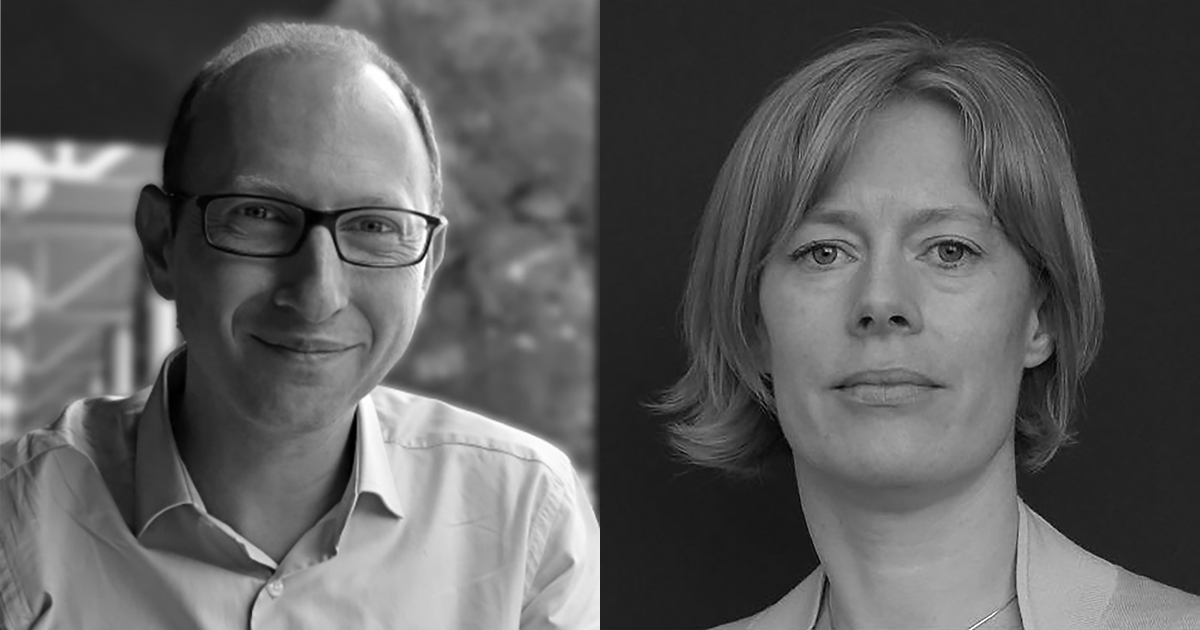
The Leenaards Foundation supports two projects led by Principal Investigators from The Sense
The Leenaards Foundation provides its support to two projects co-led by two Sense PIs as part of their “Integrative Health & Society” initiative. These projects, “I AM for Healthy Ageing: Impact of Art-Making for Healthy Ageing, Cognition, and Brain Function” and “Conditioned Open Placebo: A Psychocorporal Technique for Optimizing Postoperative Pain Management,” are led by Professor Micah Murray and Dr. Aurore Fernandez (Project Manager, affiliated to The Sense and part of the Professor Chantal Berna Renella Unit). Sense’s Executive Director, Professor Olivier Lorentz, welcomes this recognition and Leenaards’ support for the expertise of those affiliated with Sense.
Integrative health & society
As part of the third SCIENCES & HEALTH action area, the Leenaards Foundation also intends to contribute to an integrative approach to health and healthcare with the "Integrative Health & Society" initiative, as well as to societal reflections related to life sciences and health. The Foundation's starting point is that, according to the latest Swiss Health Survey, a third of patients turn to so-called non-conventional medicine to cope with illness. The success of so-called complementary approaches clearly shows that the current healthcare system, based essentially on evidence-based medicine, only partially meets expectations. As a result, a large proportion of the population is now looking for other ways of dealing with their own suffering. Against this backdrop, the "Integrative Health & Society" initiative aims to bring together patients and those involved in the various care methods in order to stimulate an intelligible dialogue between them. Ultimately, the aim is to find what brings together, rather than divides, the worlds of healthcare.
Projects Co-led by Sense PIs
This year, the Leenaards Foundation is supporting 9 action research projects. These projects aim to stimulate a better understanding and a trans- and interdisciplinary application of health and care, involving both health professionals and patients. 34 projects were submitted in response to the call for projects. The themes are varied, but what all these projects have in common is that they are field projects with a patient dimension or include a patient.
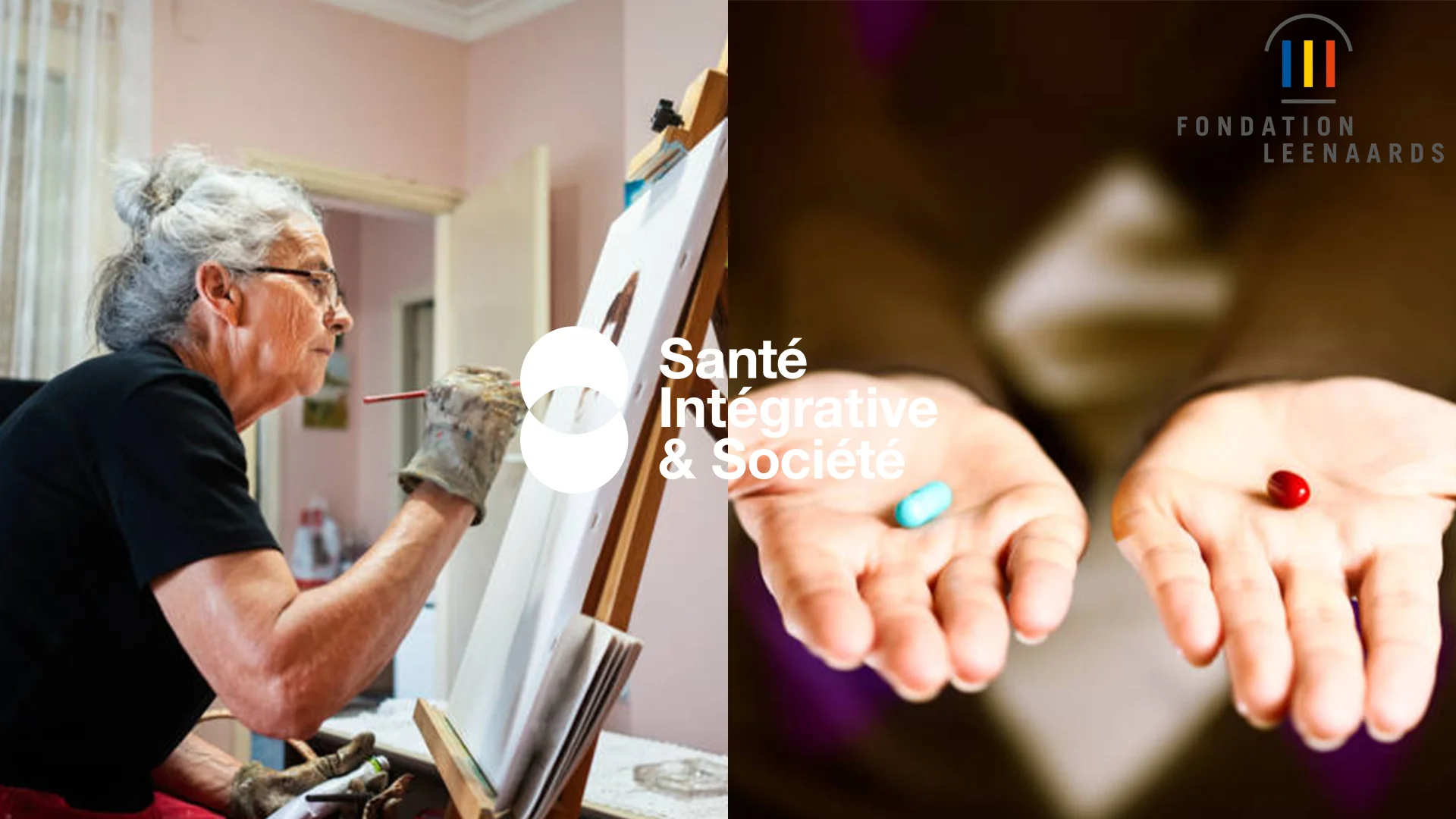
Three projects led by principal investigators (PIs) from The Sense are supported by the Swiss National Science Foundation (FNS) program “Health and Well-being"
Health is a topic of great importance to Swiss society. The SNSF is funding research on this topic at universities of applied sciences (UAS) and universities of teacher education (UTE) for a limited period. This will provide additional funding opportunities for promising projects on health and wellbeing. The general aim is to strengthen use-inspired research at the universities of applied sciences and universities of teacher education. In the second call for projects launched in November 2023, three PIs of The Sense from three different institutes at the HES-SO Valais-Wallis stood out thanks to their projects!
2.0 MR-Eye: Towards a Consensual Protocol for Magnetic Resonance Imaging of the Human Eye - Prof. Benedetta Franceschiello (Institute of Systems Engineering School of Engineering) / Prof. Philippe Potty (HE-Arc – Haute Ecole Arc Ingénierie) / Prof. Jessica Bastiaansen (Institut für Diagnostische Radiologie de l’Insel Gruppe)
The 2.0 MR-Eye project aims to develop an MRI technology capable of obtaining high-resolution images of the moving eye, eliminating the need for invasive procedures. Technically, the project aims to provide new signal and image reconstruction algorithms and a sensor that will process an organ extremely sensitive to movement. Clinically, it will eliminate the need for eye stillness, eye patching, and anesthesia, thereby opening opportunities for assessing new pathologies via MR-Eye, reducing hospital equipment costs and examination time. Additionally, it could enable the study of neuronal activity in the retina and the interaction between the eyes and the brain.
Reducing Gender Bias in Detection of Autistic Spectrum Disorders Using a Co-Construction Approach with Computer Vision and Mixed Reality Exercises - Prof. Antoine Widmer (Institute of Informatics School of Management) / Prof. Paul Matusz (Institute of Health School of Health Sciences) / Prof. Sarah Dini (Institut Travail Social de la Haute Ecole et Ecole Supérieure de Travail Social)
The project aims to create new effective diagnostic tools for all genders, as traditionally they are still too oriented towards men in this field. Feedback from clinicians, patients, and literature will be used to develop exercises in the form of video games and filmed interactions from everyday life.
XAI-Path : eXplainable Artificial Intelligence for histoPATHology - Henning Müller (Institute of Informatics School of Management) / Igor Letovanec (Hôpital du Valais)
The aim of this project is to implement user tests with decision support tools for histopathologists. The project will be conducted in the oncology department and will primarily focus on lung cancer. A plugin in Sectra's histopathological viewer will allow the implementation of tools into the normal clinical workflow. Tests, whether conducted with or without the tool and including explanations of the decisions made, are planned to measure the impact of the tools at various levels.

Monkeycall – a project resulting from the collaboration of two Principal Investigators at The Sense
Monkeycall is an applied research project initiated by Prof. Erica van de Waal (Unil), aiming to obtain high-quality recordings of vervet monkey vocalizations in South Africa to study their behaviors and modes of communication. The traditional method involves observers moving around the primates with a portable microphone and recording as many vocalizations as possible. However, this method is suboptimal because the distance between the observer and the animal reduces the quality of the recording, especially for soft calls such as lip-smacking used in grooming contexts. Additionally, many calls are produced when the monkey is in motion, for example during conflicts, intergroup encounters, or predator harassment, making it very difficult for the observer to be "in the right place at the right time" and significantly limiting the size of the recorded call sample.
A high-tech device weighing less than 100 grams.
Through an internal collaboration at the Sense (Haute Ecole d’Ingénierie and Unil), the Monkeycall project was initiated to meet the challenge of obtaining high-quality recordings of the monkeys studied by Prof. Erica van de Waal in South Africa. The ethologist teamed up with the Principal Investigator of the Neurodevices unit at the Sense, Prof. Benedetta Franceschiello. The latter supervised a team of engineers from her institution, the Haute Ecole d’Ingénierie of the HES-SO Valais-Wallis, to design a custom microphone for the project. This involved creating a collar powered by a battery and a low-power system that was integrated into a device weighing less than 70 grams, produced at the HEI using a 3D printer.
Ultimately, this project will enable the collection of natural vocal interactions. Additionally, the collars will record various other types of sounds that can be used, for example, to detail the vocal repertoire of vervet monkeys and link it to individual characteristics (age, rank, kinship, group membership, etc.) of the caller. This project will benefit other research requiring high-quality vocalizations, such as multimodal communication experiments, and could also be applied to new research avenues such as combinations of calls in wild vervet monkeys.
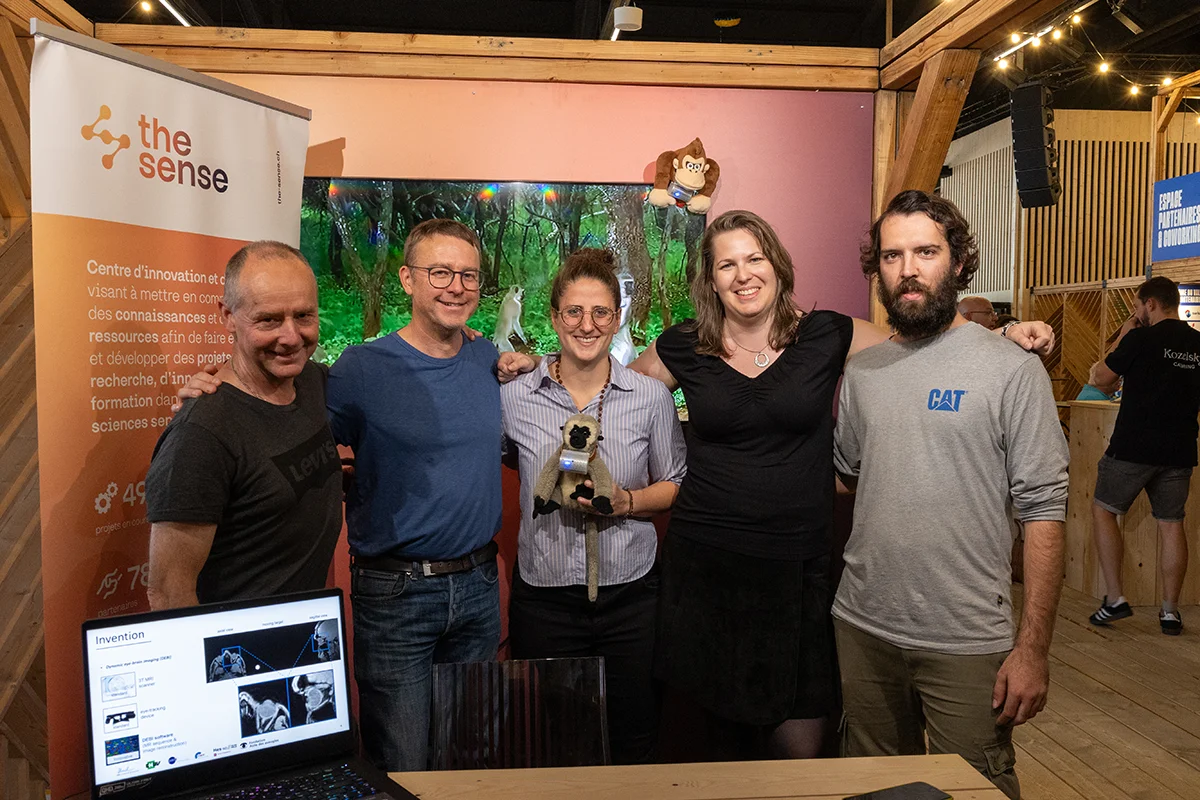
At the Crossroads of Science and Entrepreneurship: A Look Back at the Success of BISSE
A delegation of around ten members affiliated with The Sense Innovation and Research Center attended a Bootcamp on Innovation, Science, Society, and Entrepreneurship (BISSE) in December in Boston. The event was co-organized by The Sense and Swissnex in Boston and New York.
During this week, they explored the intersection of neuroscience, medtech innovation, and education. The delegation took part in a workshop on business development with leaders from CIMIT and met with representatives from TERC, a nonprofit organization specializing in STEM education. On the first day, the affiliates were introduced to successfully creating innovation in healthcare, led by global experts in the field, namely Josh Tolkoff, Wolfgang Krull, and John Collins from the Consortia for Improving Medicine with Innovation and Technology (CIMIT). Participants learned how to design a testable and specific business hypothesis and received feedback on their exercises from the experts. They also visited the MGH/HST Martinos Center for Biomedical Imaging in Charlestown, where they presented their research, as well as the MIT Media Lab and the McGovern Institute for Brain Research.
Brain Health Conference: Where Do We Go From Here?
On Wednesday, Swissnex and The Sense presented “Brain Health: Where Do We Go From Here?”, a deep dive into the evidence, policies, and ethics surrounding interventions at the intersection of neuroscience and public health, presented by Paul Matusz, Katia Steinfeld, and Gabriel Lázaro-Muñoz PhD, JD. In the final days, the affiliates took the opportunity to connect with the local academic network for future collaborations in their respective research fields. “The BISSE was a great success. Participants benefited from the innovation expertise of global experts in MedTech. Now, it will be a matter of returning to Switzerland and applying this knowledge in their respective units,” said Prof. Micah Murray, scientific and academic director of The Sense and organizer of the BISSE.
The Sense supports "La Fabuleuse Maison Cerveau"
This year, The Sense has decided to support the educational project " La Fabuleuse Maison Cerveau ". This work, produced by Neuracademia, aims to introduce children to the mysteries of neuroscience through a book that comes to life with augmented reality!
“General Alert”
This innovative work aims to understand stress, hence the title "General Alert." Stress, considered the ailment of the 21st century, concerns everyone. It is the cause of potentially harmful consequences on mental health and well-being across the population, especially among children, who have been particularly affected by the recent pandemic period. However, stress is not inherently bad; it is a normal response of the human body that allows people to survive. Even today, moderate stress in terms of duration and intensity can be beneficial. Therefore, it is important to learn to recognize it as early as possible in order to identify and manage it, to turn it into an ally and avoid its harmful effects.

<— Our Partners
Previous Section